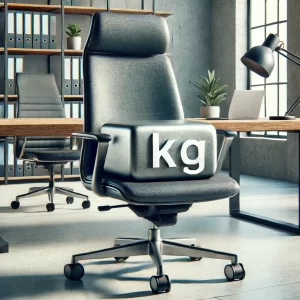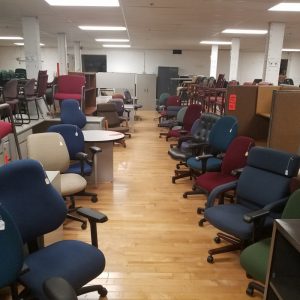
The Ultimate Guide to Office Chair Weight Limits
Learn about weight limits for office chairs and why they are important. Exceeding these limits can lead to premature wear and tear, compromised functionality, and potential safety hazards.
Hybrid working is transforming the way we work. This flexible work model allows you to blend remote and in-office work, providing the freedom to adapt your environment to your daily tasks and personal preferences. Read on to discover how you can benefit from hybrid working and how to overcome its challenges.
Hybrid working is a modern work strategy that combines the benefits of remote work with the advantages of traditional office environments. This approach lets you choose where and when you work, tailoring your schedule to suit both personal needs and professional demands. The result is a balanced work life where productivity and satisfaction go hand in hand. Remote Work – Pros and Cons.
Your hybrid workday might involve a mix of different settings and techniques. Here are some ideas to help you visualise and implement your ideal setup:
Flexible Scheduling: Plan specific days for in-office meetings and remote work sessions, allowing you to enjoy the perks of both settings.
Digital Collaboration: Use tools such as video conferencing, instant messaging, and shared documents to stay connected with your team, regardless of where you are.
Clear Communication: Set up regular virtual catch-ups and update sessions to ensure everyone is on the same page. Establish guidelines that help maintain a cohesive work environment.
This strategic blend of working environments means you can optimise your time for creativity, deep work, and collaboration.
a) Increased flexibility.
This applies to both the employer and the employees. Companies can adapt their organisational structure and source skills to best meet the needs of their customers and their employees.
b) Reduced company costs.
Companies are able to reduce their office space requirements and costs, specifically in larger cities. Hybrid employees tend to be more engaged, which leads to less turnover which also reduces costs.
c) Improved employee work-life balance.
Greater flexibility and autonomy can result in greater job satisfaction and better mental health at work. This in turn can increase happiness, while also improving job performance and employee work-life balance.
d) Less commuting.
The decrease in commuting reduces employee costs and has a beneficial impact on the environment.
e) Improved hygiene safety and social distancing.
In a hybrid working environment, employees that are ill or isolating, are often able to work from home, thereby protecting their colleagues at the office.
f) Improved productivity.
Depending on the circumstances, productivity can improve through a combination of the above factors.
a) Increased stress.
Working in a hybrid mixed environment can increase stress levels and lead to burnout as employees have no "fixed place of work".
b) Reduced productivity.
There is a flip-side to improved productivity. Workers who are constantly moving back and forth between different types of work systems can be less productive than those who stick to one system.
c) Reduced physical activity.
With a reduction in commuting, there is greater tendency for employees to do less physical activity. Unless people are intentionally keeping up their exercise, they tend to move less. Research has shown that a decrease in physical activity can lead to an increase in musculoskeletal pain, such as neck, shoulder and lower back pain. The ultimate ‘how to’ video guide of exercises and stretches for office workers
d) Workplace setup.
Hybrid working demands that you have an ergonomic workplace setup at the office AND at home. Swivel Chairs for Home and Office. Failure to do so can impact your wellbeing and lead to musculoskeletal pain, such as neck, shoulder and lower back pain.
e) Increased workload and "not switching off".
In some cases, when people work from home they "cannot switch off" as there is always "than little task that needs to be done". This can also result in burnout and even quiet quitting.
Every company has its own unique culture. In some cases, the company culture can actually be a selling point in the recruitment process and also play a role in employee retention. Maintaining a strong company culture and nourishing the company spirit is difficult with remote and hybrid office work. Digital collaboration and virtual socialising doesn’t work for everyone. Less face-to-face communication may result in a lack of camaraderie and the erosion of company culture.
It’s difficult to maintain a company culture through remote work and keep it alive, engaging, and genuine.
While this issue can be unimportant to some people, having the chance to get to know managers and peers personally and work with them closely, is priceless for recognition. It gives people the opportunity to shine and show their unique skills and personality traits that may sometimes be buried during virtual meetings.
Recognition can be quickly gained through face-to-face contact and by having a presence in the office. The lack of interaction with managers and colleagues due to hybrid working, can have a negative impact on those employees that want to "climb the corporate ladder". As a result, these employees may be "forced" to spend more time in the office, so that they are visible to the powers that be. Why workers might eventually reject hybrid work.
Whether you are doing hybrid work or are permanently in the office or at home, working in an attractive, clean space can have a positive impact on productivity. Home office ideas.
Because you spend so much time at work, improving the setup of your work area is critical to avoid back pain and other ailments caused by a poor office setup. A safe and healthy work environment is a productive work environment. Poor ergonomic practices can lead to lower productivity and in extreme cases, physical injury, which is obviously bad for both the individual, and the business. Best practices for ergonomics in the workplace.
With hybrid work, people often end up working on their couch, bed or at the dining table with a typical dining-room chair. Doing so for extended periods has a direct impact on your health and wellbeing. Creating an ergonomic home office setup is essential. Office pods - the pros and cons.

Hybrid working is more than a passing trend—it is a forward-thinking approach to modern employment.
By understanding its workings, embracing its benefits, and tackling its challenges head-on, you can create a work-life balance that enhances both your productivity and personal wellbeing. Experiment with your work setup, learn from your experiences, and adjust your routine to find the perfect balance. The future of work is flexible, and it’s yours to shape.

Learn about weight limits for office chairs and why they are important. Exceeding these limits can lead to premature wear and tear, compromised functionality, and potential safety hazards.

Using a standing desk can decrease the risk of lifestyle related illnesses and increase our physical wellbeing.

6 critical factors to consider before buying second hand office furniture.


